The Elements Of Weather And Climate And The Instruments Measuring Them
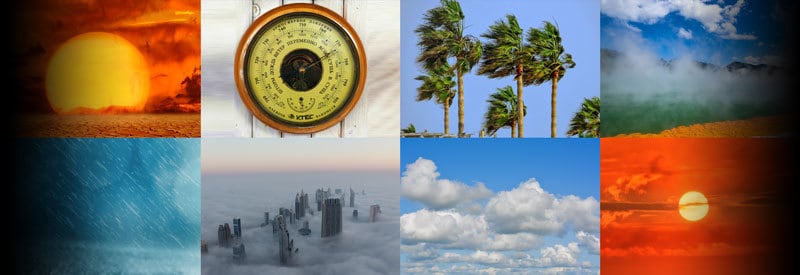
One experiences them every day and, over time, starts to associate them with different weather conditions. In fact, most of us will be very familiar with the majority of elements that make up the weather.
The elements of weather and climate are defined as the different atmospheric variables working together to create a broad spectrum of weather conditions and climate patterns. Primary elements include temperature, air pressure, wind, humidity, precipitation, visibility, clouds, and sunlight exposure.
At any point during your day, you experience temperature by feeling hot or cold. Even though you don't recognize it, you also experience the effects of humidity and atmospheric pressure. Well, you just experienced 3 of the elements that make up weather and climate.
Let's first quickly the elephant in the room for many of you. Yes, there is a difference between weather and climate. You can read all about it here. But the elements that make up both are the same.
When I talk about weather elements throughout this article, you can safely assume that, for the most part, I include climate in the discussion. It's just faster and less repetitive to refer to weather only for the purpose of this post.
As you would have guessed by now, in this article, we look at the different elements that make up the weather. We will examine what they are, define each component, and also look at the instruments that measure each element.
What Are The Elements Of The Weather And Climate?
Weather is nothing more than the different elements it is composed of, as well as the way they interact with each to create different atmospheric conditions or weather events.
Before we can discuss them in detail, we first need to identify what the elements are that make up the weather. Eight primary elements/factors drive all weather:

- Temperature
- Air (Atmospheric) Pressure
- Wind (Speed & Direction)
- Humidity
- Precipitation
- Visibility
- Clouds (Type & Cover)
- Sunshine Duration
We can now look at each one in more detail.
1) Temperature
We all know what temperature is. When discussing the weather, this will probably be one of the first topics that come up. It is because we are so sensitive to temperature and quickly become aware of feeling cold or hot.
We know what it feels like, but what exactly is temperature?
What Is Temperature?
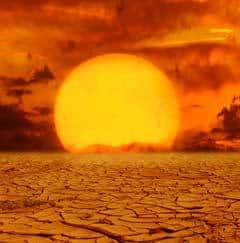
Temperature is a measurement of the amount of kinetic energy present in the air, which manifests itself physically through the experience of heat or cold.
The scales typically used to measure temperature are Celsius, Fahrenheit, and Kelvin. The instrument used to measure temperature is called a thermometer.
In more practical terms, it means that the particles in the air move or vibrate at a certain speed, which creates kinetic energy. When the particles start to move/rotate around faster, temperature increases. When the particles begin to slow down, the temperature also starts to decrease.
Instrument For Measuring Temperature
The thermometer is the instrument used to measure temperature. They come in all shapes and sizes and date all the way back to 1714. The mercury, bimetal, and digital thermometer are the 3 most commonly used instruments for measuring ambient temperature.
If you want to learn more, you can get more detailed information about the different thermometers and how they work in the following article.
2) Air Pressure
Air pressure is another essential element of weather, especially when it comes to creating or changing atmospheric conditions. It is also one of the critical variables used to make accurate weather forecasts.
What Is Air (Atmospheric) Pressure?
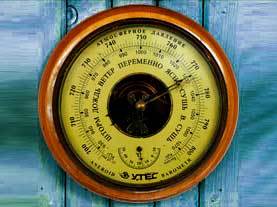
Air Pressure is the result of the pressure created by the weight of the air in the Earth's atmosphere.
It is also called barometric pressure, named after the instrument used to measure air pressure.
Although it may not be visible, air has weight since it is not empty. It is filled with small particles of nitrogen, oxygen, argon, carbon dioxide, and a few other gases.
The weight of the particles in the air creates pressure due to the gravitational force of the Earth. Since more air is present above the air close to the ground, air pressure is the highest on the planet's surface and decreases as altitude increases.
Instrument For Measuring Air Pressure
The barometer is the instrument used to measure air pressure. Evangelista Torricelli developed the first device in 1643.
Like the thermometer, the barometer also comes in different forms. Some examples include mercury, water, aneroid, and digital barometers.
If you need more information, you can find in-depth information about the different types of barometers, how they work, as well as their history in this article.
3) Wind (Speed & Direction)
The movement of air (wind) is one of the main driving forces of weather. The majority of major and even extreme weather events like cold & warm fronts, clouds, thunderstorms, and hurricanes are all driven by wind.
What Is Wind?
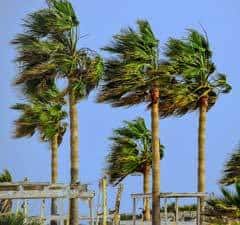
Wind is the large-scale movement of air from an area of high to an area of low pressure in the atmosphere.
The speed and strength of wind are determined by the distance between the low-pressure and high-pressure areas, as well as the difference in air pressure.
Everyone has a pretty good idea of what wind is, so no need to go into more detail here. If you want to learn more about what exactly wind is, how it is formed, and its impact on the surroundings, you can find it in this article.
Instruments For Measuring Wind Speed And Direction
The anemometer is the instrument used to measure wind speed. Consisting of 3-4 half-cups on arms rotating around a central axis, you can typically find it on top of a weather station or at an elevated position.
A wind vane (or weather vane) is the instrument used to measure wind direction. It is a flat-shaped object that spins freely on an axis. Very often, in the shape of an arrow or cockerel, you can also find it on top of a weather station or highly elevated objects.
It is common to see them on top of roof chimneys, church towers, and even communication towers. If you need to, you can find more information about anemometers and wind vanes in the same article mentioned in the previous paragraph.
4) Humidity
Humidity is another weather element that cannot be seen but can be felt. It not only plays a big part in weather formation but also directly influences our physical comfort levels.
What Is Humidity?
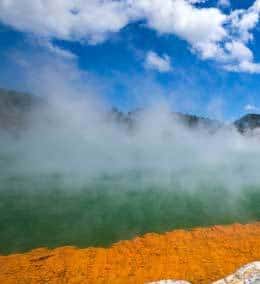
Humidity is the amount of water vapor that is present in the atmosphere at any specific time.
Water vapor is nothing more than water in a state of gas (after the liquid has evaporated). Although humidity and its effects can usually be felt, it is normally invisible to the naked eye.
Humidity can be challenging to understand and interpret correctly. Then you also have to be able to make a clear distinction between absolute and relative humidity.
The subject is too comprehensive to cover in this post, but you can read the in-depth article covering humidity in detail here.
Instrument For Measuring Humidity
The hygrometer is the instrument used to measure wind speed. You also find more than one type of this device, like the psychrometer and the resistance hygrometer. You can find out more in the same article mentioned in the previous paragraph.
5) Precipitation
There is no argument that water in any of its forms is an absolute necessity for life on Earth to exist. Humans, animals, and plants need water to grow or stay alive, and precipitation is the only way to replenish the dams, rivers, reservoirs, and groundwater on which we rely.
What Is Precipitation?

Precipitation is water in its different states, which form after condensation turned water vapor into its liquid or solid form, which falls to the ground after it becomes too heavy to stay suspended in the air.
Precipitation can take the form of rain, snow, hail, or graupel.
Precipitation is primarily the result of evaporation and condensation. To learn more, you can find out what these processes are, how they develop, and how they result in precipitation in this article.
Instrument For Measuring Rainfall
A rain gauge is the instrument used to measure rainfall. It is essentially a measured container that captures rain and measures the amount that falls over a set period of time.
You can learn more about the different types of rain gauges and how they work in the following article.
6) Visibility
Visibility may seem like a very unlikely element of weather but it is especially important when discussing & measuring weather conditions like fog, mist, freezing drizzle, and smog.
What Is Visibility?

Visibility is the measurement of the degree through which an object can be observed over a certain distance.
This measurement is crucial when conditions like mist, haze, fog, and freezing drizzle are present, which can severely impede visibility.
The importance of the ability to measure this element is often underestimated. It is especially applicable in areas where visibility plays a crucial role, like airports and harbors, where it can literally be a matter of life or death.
Instrument For Measuring Visibility
Visibility sensors like the "forward scatter sensor" are the instruments used to measure visibility. In the past, using your own vision (eyes) to measure the degree to which you can observe an object was the standard.
7) Clouds (Type & Cover)
It is no secret that clouds are one of the quickest ways to determine current and future weather conditions. Studying them in more detail with scientific equipment is very valuable to make very accurate assessments of present and feature atmospheric conditions.
What Are Clouds?

Clouds are water droplets or water in different states (like ice and snow crystals), which formed after water vapor reached condensation level and could no longer remain in gaseous form.
Knowing how to identify a certain type of cloud and the weather associated with it can prove valuable when assessing weather conditions with only visual references. You can all about the different clouds and their characteristics in this article.
Instrument For Measuring Clouds
The advanced instruments meteorologists use to study clouds in detail are weather satellites and radars. Satellite and radar images are able to accurately measure cloud density, the amount of moisture, the temperature, and the movement of the clouds.
8) Sunshine Duration
The amount of sunshine the Earth receives (which is a characteristic of solar radiation) greatly influences other elements of the weather like ambient temperature, and more indirectly, humidity and air pressure.
What Is Sunshine Duration?

Sunshine duration is the length of time the Earth's surface is directly exposed to solar radiation.
It is also referred to as sunlight hours and measure the amount of exposure over a set period of time (generally in hours per day or year.)
As already stated, sunshine duration influences other weather elements, which can change the whole makeup of the weather conditions. This ability makes it a more powerful and influential factor than you might think.
Instrument For Measuring Sunshine
Sunshine recorders, more specifically Campbell–Stokes recorders, are the instruments used to record sunshine duration. Campbell–Stokes recorders basically consist of a spherical lens that focuses sunlight on a specific type of tape to make its measurement.
Conclusion
This article thoroughly explained the eight elements that make up the weather, what they are, and which instruments are used to measure each one.
There are smaller elements influencing the weather and climate as well but are not as impactful as the eight elements discussed in this post.
Never miss out again when another interesting and helpful article is released and stay updated, while also receiving helpful tips & information by simply clicking on this link .
Until next time, keep your eye on the weather!
